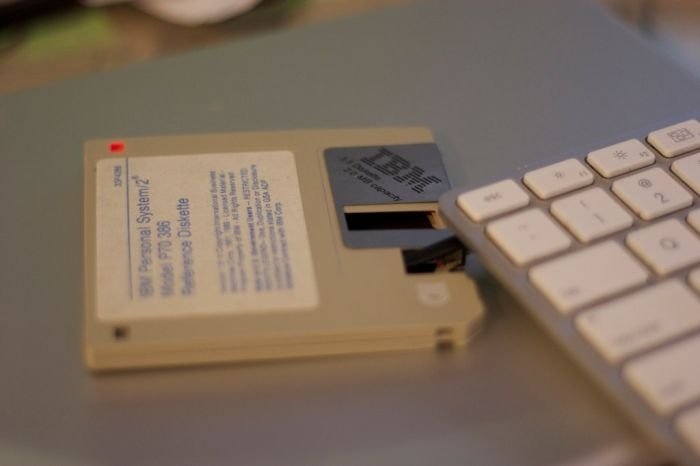|
|
DIY USB Floppy
|
Mechanically incompatible higher-density formats were introduced (e.g. the Iomega Zip drive) and were briefly popular, but adoption was limited by the competition between proprietary formats, and the need to buy expensive drives for computers where the media would be used. In some cases, such as with the Zip drive, the failure in market penetration was exacerbated by the release of newer higher-capacity versions of the drive and media that were not backward compatible with the original drives, thus fragmenting the user base between new users and early adopters who were unwilling to pay for an upgrade so soon. A chicken or the egg scenario ensued, with consumers wary of making costly investments into unproven and rapidly changing technologies, with the result that none of the technologies were able to prove themselves and stabilize their market presence. Soon, inexpensive recordable CDs with even greater capacity, which were also compatible with an existing infrastructure of CD-ROM drives, made the new floppy technologies redundant. The last advantage of floppy disks, reusability, was countered by re-writable CDs. Later, advancements in flash-based devices and widespread adoption of the USB interface provided another alternative that, in turn, made even optical storage obsolete for some purposes.
An attempt to continue the traditional diskette was the SuperDisk (LS-120) in the late 1990s, with a capacity of 120 MB, which was backward compatible with standard 3½-inch floppies. For some time, PC manufacturers were reluctant to remove the floppy drive because many IT departments appreciated a built-in file-transfer mechanism (dubbed Sneakernet) that always worked and required no device driver to operate properly. However, manufacturers and retailers have progressively reduced the availability of computers fitted with floppy drives and of the disks themselves. Widespread built-in operating system support for USB flash drives, and even BIOS boot support for such devices on most modern systems, has helped this process along.
External USB-based floppy disk drives are available for computers without floppy drives, and they work on any machine that supports USB mass storage devices. Many modern systems even provide firmware support for booting to a USB-mounted floppy drive.
|
|









